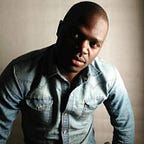Customer is the centre of everything | Richard Omolo, UX Designer Booking (II)
This is part two of the interview, please read part one if you have not.
Monica: How do you interact with your Product Owner? Where does one’s job end and the other’s begin?
Richard: For me, it’s not only about the Product Owner, but also about how I interact with the engineers, too — they are part of delivering the product. With a guiding principle that by helping our users we help our partners and our business, at Booking.com we believe in keeping the customer at the center of everything we do. We work closely together and there is no need for a proxy between designers and engineers.
Narrowing down to POs, I have been fortunate enough to work with many different product owners. One of the things I’ve learned is that, just like me, they all have different and unique strengths. For example, a PO might be weaker on design thinking while possessing strong analytical skills.
A unique thing about Booking.com is that we value data over opinions. This, combined with our mantra of keeping the customer at the center of everything we do, makes us use data to inform all of our decisions — both qualitative and quantitative. So more often, you will see not only the designer and the PO at a user research session, but also the engineers!
With the above said, I empathize with my team members through each stage of the process. For example, when working with the PO, I will focus more on the business and product side of things while connecting the importance of my design decisions to the user, the business, and the product. When working with engineers, I look more into the edge cases, understanding their engineering constraints early while communicating the design values to them.
Monica: In the product world, you almost always have to compromise a bit between the ideal user flow and the development constraints. How does this get negotiated in your team?
Richard: User flows are important in the sense that they help give a clear picture of the tasks needed for the experience we aim to build. And so, it is important that we are on the same page, clear about our user goals, business objectives and how our user flow meets the two.
When we get to a point where we have to re-think or make some trade-offs due to development constraints, then we negotiate based on the user goals and business objectives. Here, data is our guide while putting in consideration effort needed and the impact of our final decision.
Monica: What was the biggest AHA! or Oh Sh** moment in your UX work so far?
Richard: When I go out there and talk to customers, identify pains point in our product, come up with a hypothesis, craft a solution, and then have the chance to try it out on millions of users … when my work finally gets validated by my primary data metrics, it always brings me joy.
There are times when I fail. In fact, I have failed a lot, but I choose to learn from these cases and remain agile enough to iterate and do things differently based on these learnings.
Monica: Is there something you’d like to tell us, that I didn’t ask about?
Richard: Yeah, I guess the weirdest thing about me, which actually brought about my love for solving problems and design, is that I always have a notebook with me. Always! Sometimes I get ideas in the middle of nowhere. I might have an idea at night, and I will wake up and sketch my idea quickly right there. Or something might come to me, even on the football pitch during half time, when taking a breather before going back to training! My mind is always thinking about design, and I never want to lose out on a great idea.
This is part two of the interview, please read part one if you have not.
